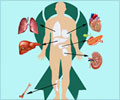93% of organ donations in India are from living donors, 80% of whom are women-exposing a hidden gender bias. Time to rewrite the narrative.
Highlights:
In a country as diverse and culturally rich as India, a disconcerting trend has emerged in the realm of organ transplants, as data spanning nearly three decades reveals a glaring gender disparity (1✔ ✔Trusted Source- 93% of organ donations come from living donors, revealing a striking imbalance
- Women, driven by societal expectations, predominantly serve as living organ donors
- Guilt //and reluctance shape the organ transplantation landscape for women recipients
Organ donation statistics
Go to source). The figures, extracted from the years 1995 to 2021, underscore a concerning reality: for every woman receiving an organ transplant, four men undergo the same life-saving procedure. This stark contrast, totaling 29,000 transplants for men and a mere 6,945 for women, reveals a complex interplay of societal pressures, economic roles, and deeply ingrained gender preferences.
‘In the world of organ transplants, it's a poignant paradox – 4 in 5 living donors are women, yet 4 in 5 recipients are men. #organdonation #genderbias #medindia’





Advertisement
Living Donors and the Gender Gap
While the altruistic act of organ donation is commendable, the data raises eyebrows as it exposes a gender skew among living donors. Dr. Anil Kumar, the director of the National Organ & Tissue Transplant Organisation (NOTTO), sheds light on a startling statistic – 93 percent of total organ donations in India come from living donors. This trend, however, takes a more nuanced turn: the majority of living organ donors are women.Advertisement
Socio-Economic Factors: The Driving Force
A 2021 study published in the Experimental and Clinical Transplantation Journal unravels the intricate web of living organ transplantation in India. The research reveals that a staggering 80 percent of living organ donors are women, predominantly wives or mothers.The root cause of this gender disparity lies in socio-economic pressures, compelling women to assume caregiving roles within the family. As primary nurturers, wives and mothers find themselves taking the lead in life-altering decisions, including organ donation.
Advertisement
Men's Reluctance and the Breadwinner Dilemma
Complicating the matter further is the reluctance of men, often the primary breadwinners, to undergo surgery. This hesitation significantly contributes to the gender gap in organ recipients. The study underscores that when the recipient is a male breadwinner, family members, especially wives or parents, feel a heightened responsibility to step forward as living organ donors. The dynamics of societal expectations and traditional gender roles continue to play a significant role in perpetuating this imbalance.Beyond the statistics and societal pressures, the emotional dynamics surrounding organ donation add another layer to the gender disparity. Women recipients, particularly, may experience guilt when their family members, especially wives or mothers, become donors. This emotional burden creates a scenario where women recipients often find themselves waiting for organs, while potential male recipients receive priority.
To conclude, the gender disparity in organ transplants in India is a multifaceted issue that demands urgent attention and concerted efforts for change. Addressing societal expectations, challenging traditional gender roles, and fostering awareness about organ donation are crucial steps towards creating a more equitable and inclusive organ transplantation landscape. As the nation grapples with this challenge, the spotlight must be turned on dismantling gender biases, ensuring that every individual, irrespective of gender, has an equal chance at a healthy life through organ transplantation.
“In rewriting the story of organ transplants, let us break free from the chains of gender bias, ensuring every life has an equal chance at renewal and hope.”
Reference:
- Organ donation statistics - (https://notto.mohfw.gov.in/WriteReadData/Portal/News/814_1_2013_to_2022.pdf)
Source-Medindia











